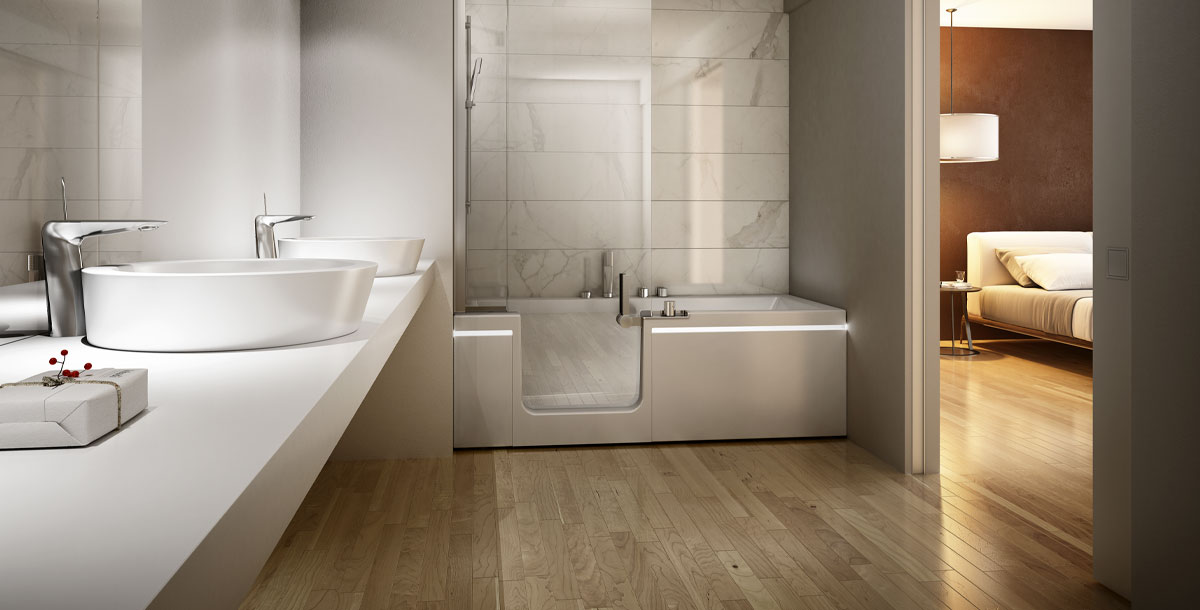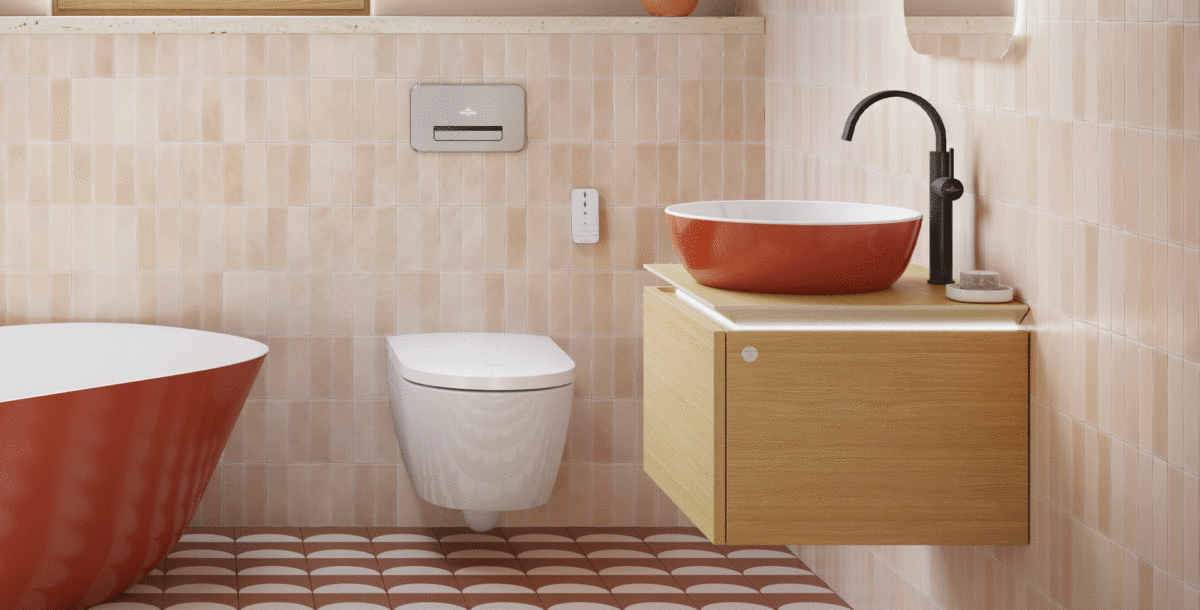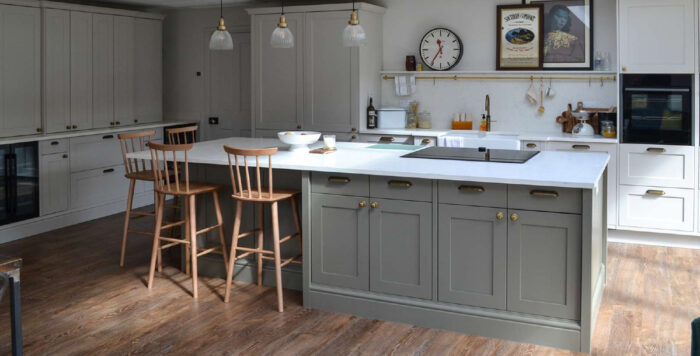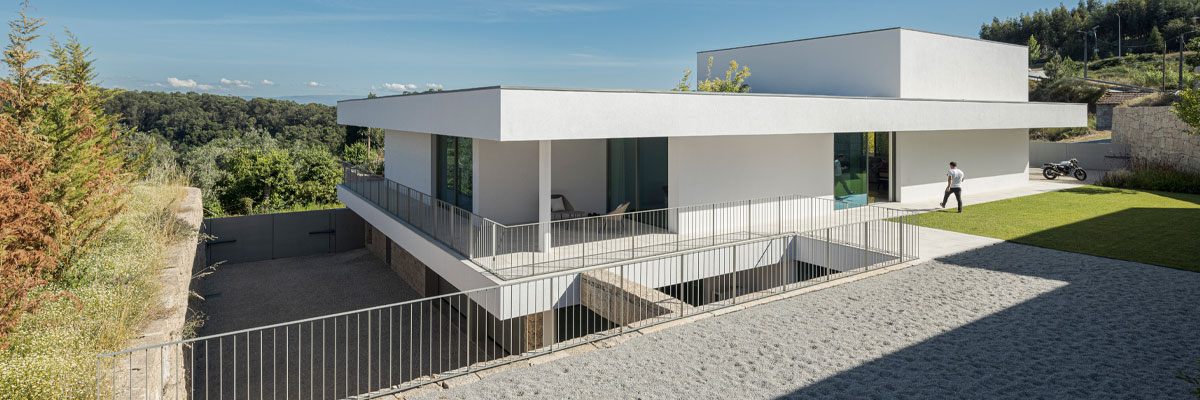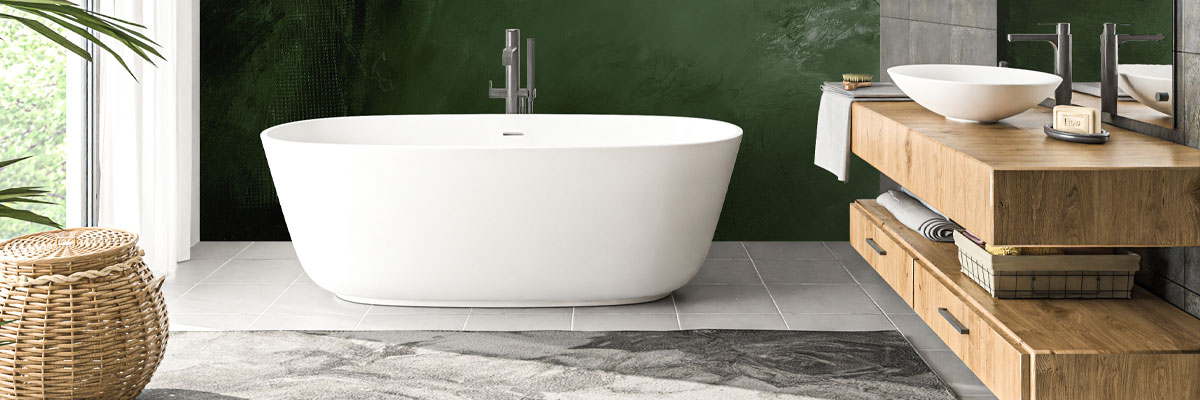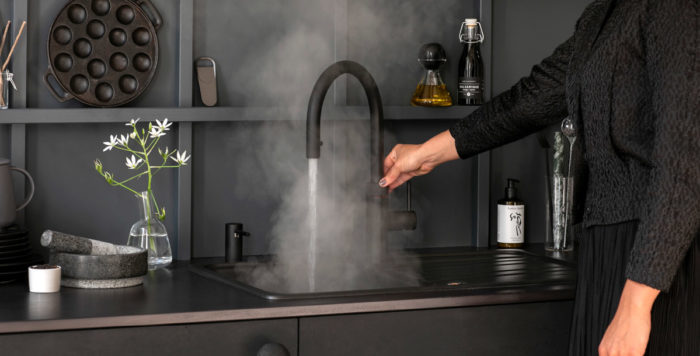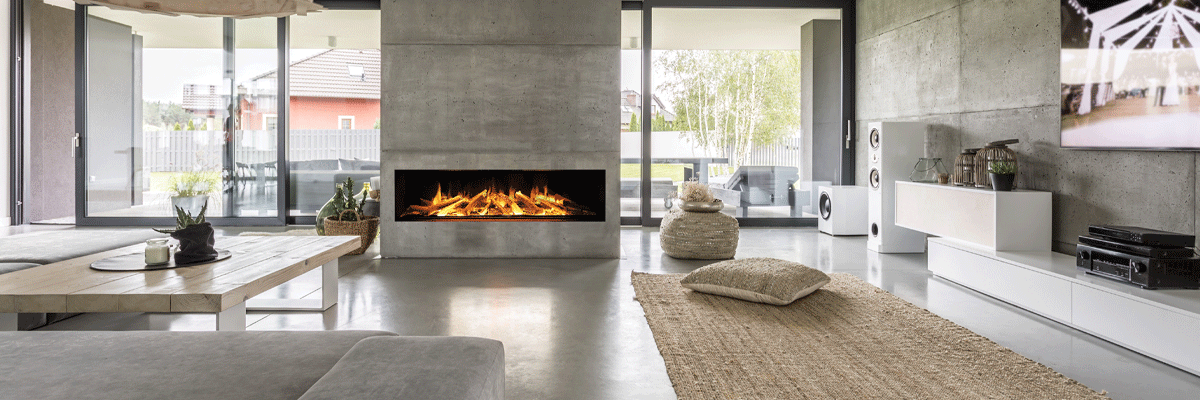How to futureproof your bathroom
Tips for creating a hard-working layout that will last for years to come
Create a futureproof bathroom with inclusive design that works for all the family, now and in the future.
Whether you have a growing family, a multi-generational household or are looking towards retirement, creating a bathroom layout with an eye to future makes financial sense. Do it right and you should end up with a comfortable yet functional space that costs around the same as a standard refit.
Design the layout for everyone
Future-proofing your bathroom isn’t about the addition of clinical looking accessories, obtrusive grab bars and plastic stools. A genuinely good scheme will go far beyond accessibility: the right layout will work for any stage of life. Start by thinking about who lives in the house now, their needs and how this might change in the years to come.
For example, will you be caring for an elderly relative or are you planning on staying in your home into your own old age? Will your children return after university or do you have young children who, once they become teenagers, will have even more clutter? Get the layout and features right the first time and it’s likely you’ll save on updates, as all you’ll need will be small tweaks.
Remember, too, that any additions down the line will entail further installation costs, so it makes economic sense to include them now. For example, a tanked wet room split by a glass panel will not only provide step-free access to washing for anyone who needs this, but also minimises the risk of leaks, protects plaster walls from mould and insulates the space, helping to cut energy bills.
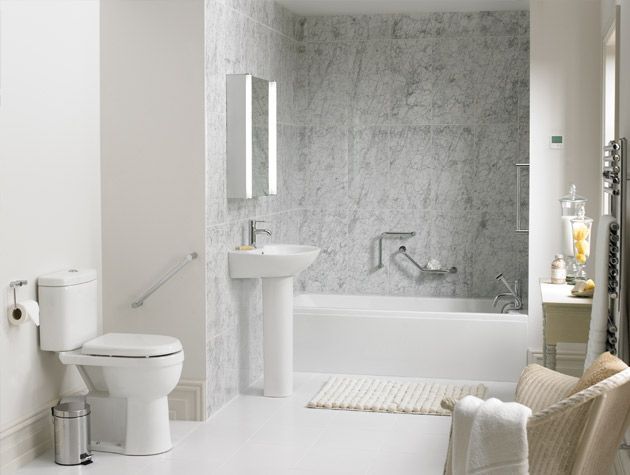
Photo: Bathstore
Think about modern product designs
The product designs now available for multi-generational living means specialist pieces and furniture will work in harmony with other fixtures and that standard items can be adapted for different needs.
‘Consider adding wall-hung sanitary ware that’s fitted to suit the tallest user, as it’s easier and more comfortable to reach that bit higher,’ says Simon Davis, retail director at Bagnodesign. ‘A step for children can be kept hidden away under the sink.’
Basins
A wall-mounted basin also allows a dressing-table-style stool to be placed below it, so the mirror can be used for seated make-up application or shaving. The latest trends in brassware also have the added advantage of suiting a future-proof bathroom.
Showers
‘A walk-in shower offers a more accessible option for all ages and, potentially, a safer one for users with different mobility needs,’ says Nicholas Cunild, managing director at Matki. ‘Aside from the practical benefits, in some cases a feature like this can boost a property’s value. According to a recent survey by Nationwide, it could add 3 to 5% in value, thus passing on the benefits for the next generation.’
‘A thermostatic shower will regulate water temperature, meaning you won’t be scalded if there is a sudden drop in the flow of cold water,’ advises Charlie Borthwick of Cue & Co of London. ‘Showers can even be digitally controlled. Simply preset to your desired temperature and then operate via a remote control, so you can turn on the water before stepping in. However, if you prefer a bath, look for a design with side-access – some of the latest are neither bulky nor ugly. Teuco won a Design Plus Award for its Prêt-à- Porter walk-in shower-bath.’
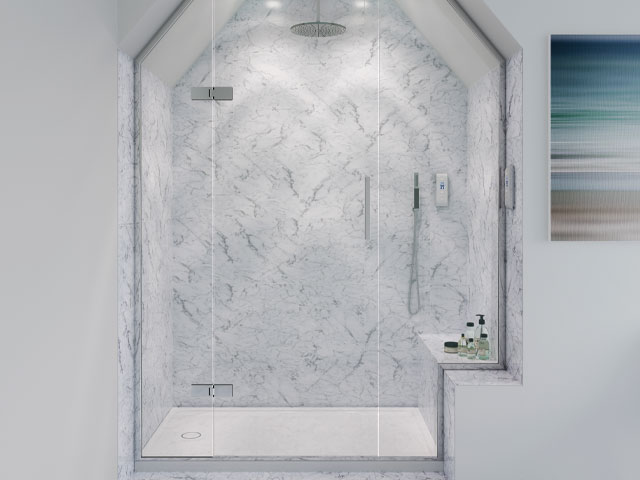
Photo: Kohler
Toilets
WCs are another area to consider. While raised-height models or a wall-hung version mounted slightly higher are easiest to use, those with quiet flushes for night-time use or infrared sensors on flush plates provide extra convenience. Similarly, push-button controls for showers and lever-handled taps work well for younger and older family members.
Storage
Adequate storage is key, so look for units that are part of a range and multifunctional furniture that can be moved or added to as your household’s requirements change.
‘Modular pieces will offer the most flexibility,’ says Wayne Dance, managing director at InHouse Inspired Room Design. ‘Try setting cabinets either side of a washbasin or using individual wall cabinets, bench seating and storage cubes to provide each family member with somewhere to put things while creating a feature.’ Built-in laundry baskets will also free up floor space.
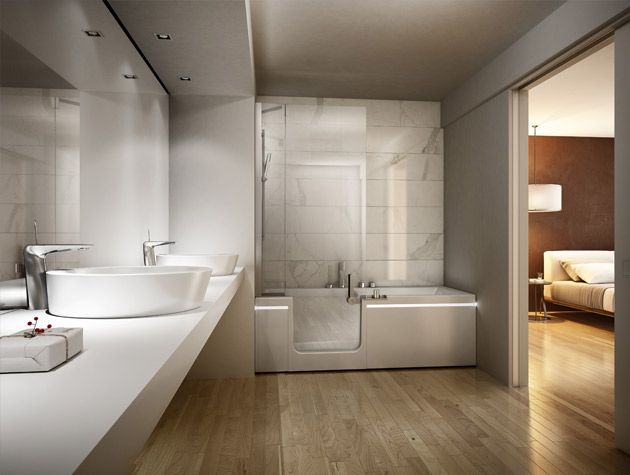
Teuco won a Design Plus Award for its Prêt-à-Porter walk-in shower-bath
Consider design-led details
Swathes of white plastic and obtrusive rails can mar the most luxurious space so, fortunately, the latest designs blend style and substance. If you have a large enough showering area, for example, an integral bench negates the need for a plastic seat, while many sleek tiles are available in anti-slip versions. Grab rails in stainless steel can double as towel rails, while stools with cushions and chrome legs can match brassware, easing seamlessly into a scheme.
‘A great product from Hewi is a handhold that’s also a shower riser rail,’ advises Joel Fry, designer at Ripples. ‘It’s in front of you if you need it, but is still a working piece of equipment and comes in different finishes and shapes. Portable waterproof seats have come a long way, too, and double up as a shelf for products.’
Think beyond the obvious aids to make a bathroom functional for all who use it. Good lighting is important, so add it in the right places, such as above washing points. Plinth lights and illuminated shelving will help to boost visibility in potentially dark nooks and sensor lighting, which turns on when you enter the room and off when you leave, can be very useful.

Photo: Bette

